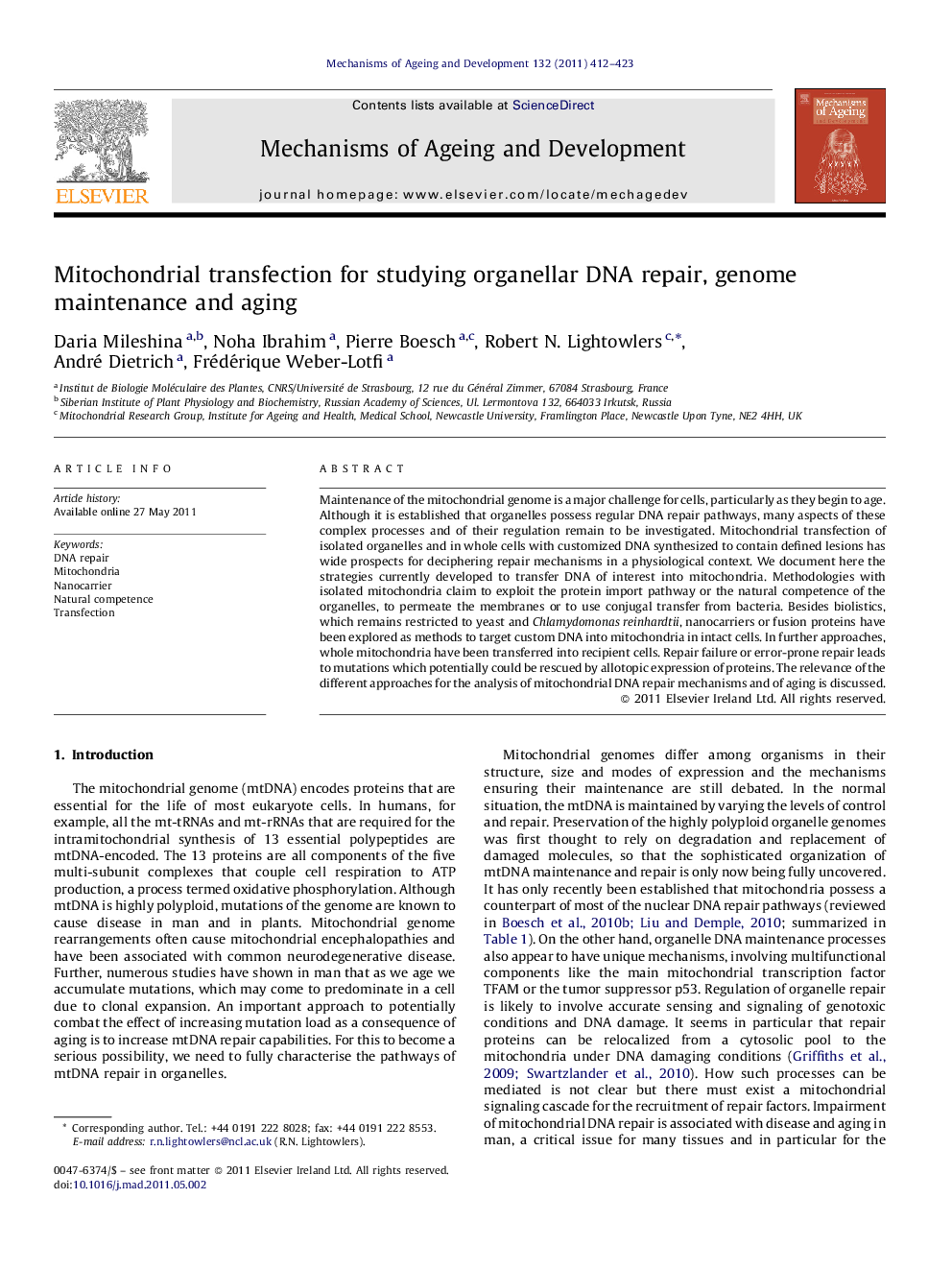| Article ID | Journal | Published Year | Pages | File Type |
|---|---|---|---|---|
| 1919590 | Mechanisms of Ageing and Development | 2011 | 12 Pages |
Maintenance of the mitochondrial genome is a major challenge for cells, particularly as they begin to age. Although it is established that organelles possess regular DNA repair pathways, many aspects of these complex processes and of their regulation remain to be investigated. Mitochondrial transfection of isolated organelles and in whole cells with customized DNA synthesized to contain defined lesions has wide prospects for deciphering repair mechanisms in a physiological context. We document here the strategies currently developed to transfer DNA of interest into mitochondria. Methodologies with isolated mitochondria claim to exploit the protein import pathway or the natural competence of the organelles, to permeate the membranes or to use conjugal transfer from bacteria. Besides biolistics, which remains restricted to yeast and Chlamydomonas reinhardtii, nanocarriers or fusion proteins have been explored as methods to target custom DNA into mitochondria in intact cells. In further approaches, whole mitochondria have been transferred into recipient cells. Repair failure or error-prone repair leads to mutations which potentially could be rescued by allotopic expression of proteins. The relevance of the different approaches for the analysis of mitochondrial DNA repair mechanisms and of aging is discussed.
► Strategies have been explored to transfect mitochondria directly or in intact cells. ► Some of these are suitable to analyze organelle DNA repair pathways and aging. ► Mitochondrial natural competence supported analysis of base excision repair. ► Allotopic expression can rescue mitochondrial DNA mutations.
